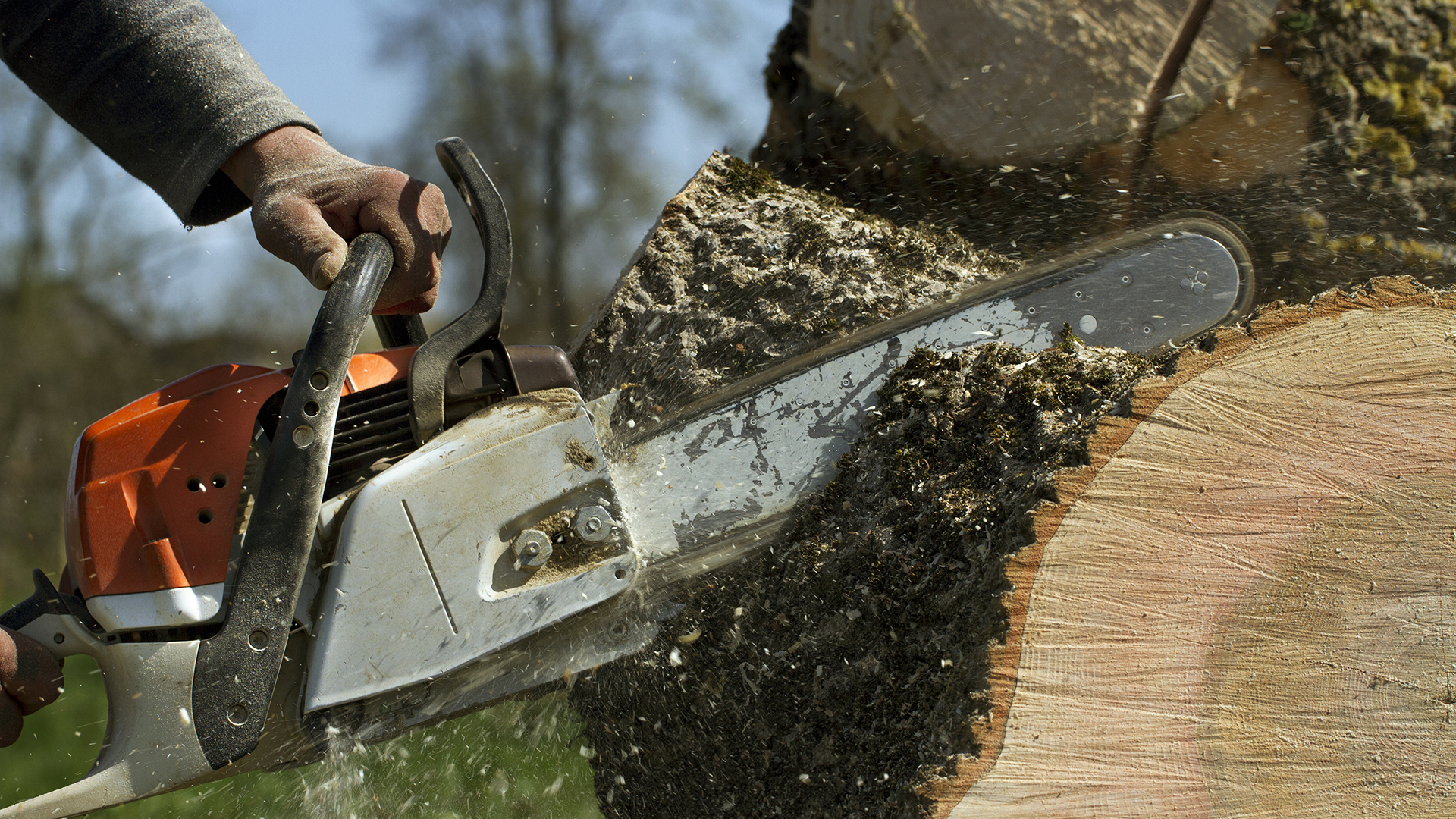The sense of satisfaction after felling a tree is immense. Once the job is done, the stump will be all that remains. You may choose to keep it as a seat or as a feature. But if the stump is unsightly or you want to free up space for something else, it’s time to get rid.
We’ll cover all you need to know about removing stumps with chainsaws. New to chainsaws? You’re better off honing your skills with easy projects like cutting logs into firewood before tackling a stump. It involves cutting close to the ground, so you'll need a high level of control to avoid kickback.
Safety precautions are vital to protect yourself. We’ve consulted an expert to advise on removing stumps with chainsaws to give you peace of mind.
Before you start, you’ll need a chainsaw in top condition. Read our guide to the best chainsaws for our round-up of the most powerful tools that make light work of the toughest tasks.
Removing stump with chainsaw

Melody Estes is a Landscape Design Gardening Supervisor from Maine and a consultant for The Project Girl, where she offers her expertise on taking care of your yard.
Removing a stump with a chainsaw can be hazardous. If you’re uncertain about your ability to do the job safely, don’t hesitate to call in a pro. If you’re confident in your skills and it’s a small tree, you may choose to tackle it yourself.
It’s vital to protect yourself by wearing safety gear, including protective glasses, chaps, gloves, sturdy boots, and earplugs.
“Check your chainsaw is in good condition and you have plenty of fuel,” says Melody Estes, a Landscape Gardening Supervisor from Maine and a consultant at The Project Girl. The blade must be sharp before you begin.
“Make sure the area around the stump is clear of debris and hazards like rocks or tree branches. Let the chainsaw run until it gets to full speed. This will give you more power when cutting through the stump,” explains Melody.
“Once you've established your footing, hold the chainsaw at an angle, so you can cut as deep as possible without hitting your legs (or anything else). Cut away at one side of the stump until all that's left is a small part of wood attached to another piece below ground level. This will keep it from splitting apart when you hit it again with another stroke below,” says Melody. Avoid exerting pressure, as it could result in kickback.
Next, dig around the stump to expose the roots. It’s safest to tackle the underside with a handsaw to avoid hitting debris. Cut through the roots until you can lift out the stump.
Discover more guides for the garden…
Cheap chainsaw deals
Best leaf blowers
Best pressure washers
Cheap pressure washer deals
Best patio heaters
Best inflatable hot tubs

